Droppings
Droppings are the most distinctive sign of a water vole’s presence. The colour ranges from green, brown, black and can be purple or reddish. It all depends what plant matter they were last feeding on and breeding females have been known to opportunely consume a fish. They have the texture of putty when fresh and will dry out to show plant matter.
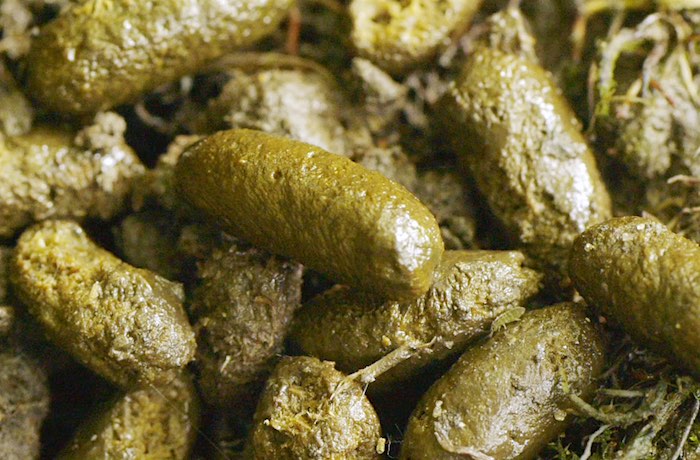
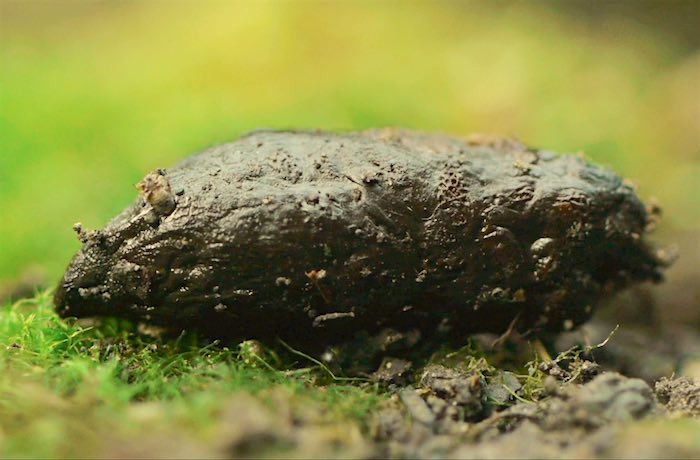
[For direct comparison, both images above are the same scale]
Rat droppings are always larger and are foul smelling compared to a water vole’s which are smaller and odourless.
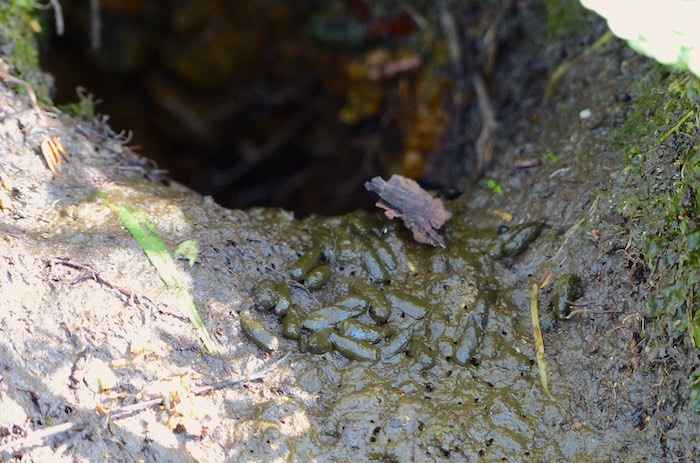
Latrine
Although occasional droppings are found along distinctive runways through vegetation, most are left in a pile at discrete sites close to the nest and at boundary edges along their territory where they enter or leave the water. Latrines are established and maintained from February to October. Water voles scent mark their latrines from a lateral scent gland, then drum them with their hind feet which results in the latrines being flattened. During surveys, you soon learn to recognise these. As the latrines are often visited, they show a flattened mass of old droppings with new ones deposited on top. In contrast, rat droppings are scattered along their runs or left at latrine sites away from the water’s edge. These are usually underneath bridges or in dark corners. Unlike a water vole’s which are left along the bank, close to the water’s edge and are either visible, or hidden beneath overhanging vegetation.
Feeding signs and footprints
Water voles may nip off vegetation and eat it on the spot. There is usually a distinctive 45° angle cut just above the stem of the plant.
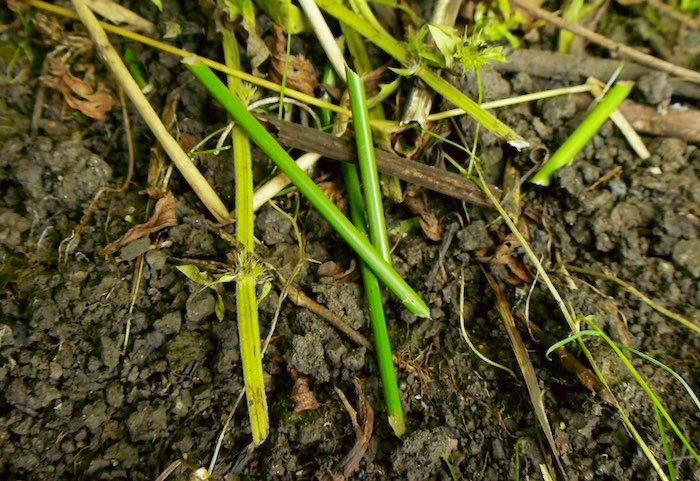
They will also gnaw through branches such as willow or sallow, leaving the same distinctive 45° angle cut.
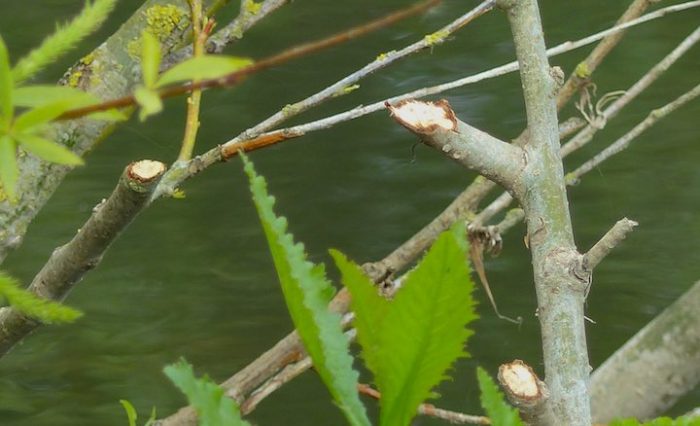
Water voles may also select a favoured feeding spot along pathways, or on a haul out platform known as a feeding station. These will have a neat pile of nipped vegetation with sections between 5 and 10cms in length and are good field signs of water vole presence. Water voles also take lengths of vegetation into their burrow and then nip them, or may nip them into pieces and store them in their entrances or in a burrow chamber.
You may also find their star-shaped footprints close to feeding sites or along runs.
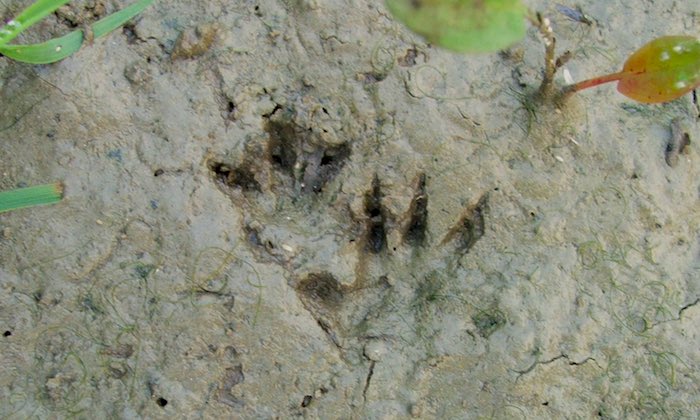
Their footprints are similar to a rats, but rat toes tend to be forward facing (although they can splay on soft ground, but not into a star-shape). The rat has a longer heel than a water vole.
There is a great laminated sheet by the Field Studies Council which is called A Guide to British Mammal Tracks and Signs which is an excellent guide to carry with you when you are surveying and includes a comparison of water vole and rat footprints, as well as otter and mink footprints.
Water vole burrows
Burrow entrances are usually wider than high, between 4 – 8cms and are about the size you could roll a tennis ball into. They can appear larger, but this is due to erosion and narrows down to the usual width inside.
Rat burrows are slightly larger in size at 8 – 10cms, with fan-shaped spoil outside the burrows and interlinking, well trodden runs. They tend to be higher up the bank than a water vole, although some water vole colonies are taken over by rats which results in the burrows becoming larger.
Field vole, bank vole and woodmouse burrows are much smaller at only 2 – 3cms across.
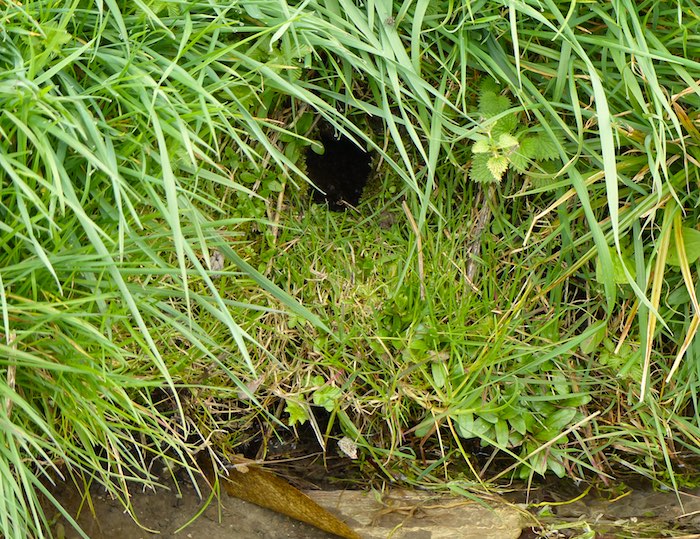
Surveys
You can help water voles by surveying annually to find out where they are present or absent to detect any changes in their populations and distribution. Surveys can be carried out either on your own or with a friend. It’s a great way to get fit and help wildlife!
The National Water Vole Monitoring Programme is open to anyone. It’s organised by the People’s Trust for Endangered Species (PTES). You can find out all about it and get yourself registered as a surveyor on their website via the link above.
Becoming a surveyor is really easy. You just need to register online. Anyone can do it and you don’t need any previous experience or knowledge. After choosing your site, you need to go there to plan your survey route. The survey needs to be done during May and then your records submitted online. You can carry out additional surveys if you would like to, or just undertake an annual survey.
You can also survey for the Wildlife Trust. To find out how, visit their website: https://www.wildlifetrusts.org/.
